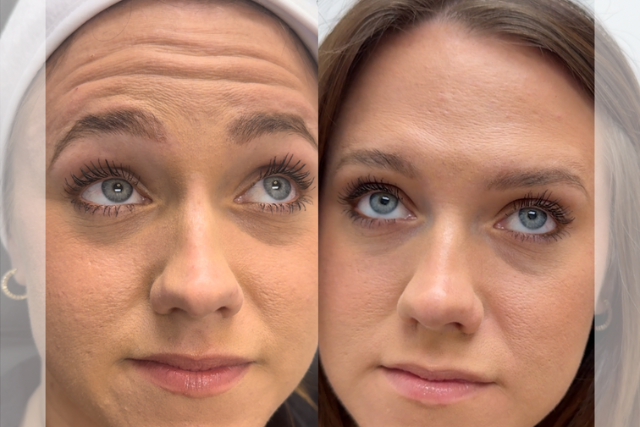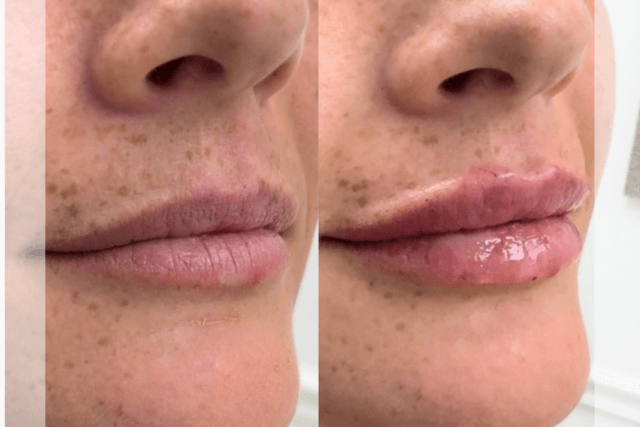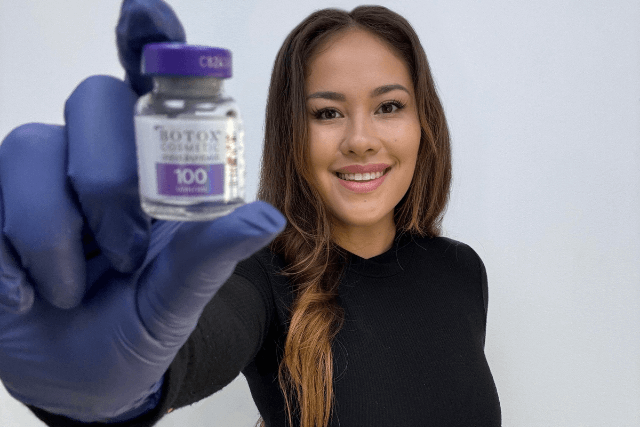When it comes to non-surgical aesthetic treatments, Botox and fillers are two of the most popular options for smoothing out wrinkles and enhancing facial features. Despite both being used for cosmetic purposes, these two treatments are fundamentally different in how they work and the results they produce. If you’re considering either Botox or fillers, it’s important to understand the differences between them and how each can benefit you. This guide breaks down Botox and fillers, explaining their uses, benefits, and what makes them unique.
What is Botox?
Botox is the brand name for botulinum toxin, a neurotoxic protein that, when injected into specific muscles, temporarily blocks the nerve signals responsible for muscle contraction. This action prevents the muscles from moving, which leads to a reduction in the appearance of dynamic wrinkles—those lines that develop from repetitive facial expressions such as frowning, smiling, or squinting.
How Botox Works: When Botox is injected into targeted muscles, it temporarily paralyzes or weakens them. This softens the overlying skin, leading to a smoother, more youthful appearance. Botox is most commonly used in the upper face, specifically for:
- Forehead lines: The horizontal lines that form on the forehead when you raise your eyebrows.
- Crow’s feet: The fine lines and wrinkles around the eyes that appear when you smile or squint.
- Frown lines: The vertical lines between your eyebrows that form when you frown.

The Benefits of Botox:
- Smoothing of dynamic wrinkles: Botox effectively reduces the appearance of fine lines and wrinkles caused by repeated muscle movements.
- Non-invasive: Unlike surgery, Botox is a quick, in-office procedure with no need for incisions or stitches.
- Minimal downtime: Most people can resume their daily activities right after the procedure.
- Preventative benefits: Botox doesn’t just treat existing wrinkles; it can also prevent the formation of new wrinkles by limiting muscle movement.
- Quick results: Botox shows results within 3-7 days, with full effects visible after about two weeks.
- Long-lasting effects: The effects of Botox typically last between 3 and 6 months, depending on the individual and the treatment area.
What Are Fillers?
Doctors inject dermal fillers, often referred to simply as fillers, into the skin to restore lost volume, smooth wrinkles, and enhance facial contours. Manufacturers typically make fillers from materials like hyaluronic acid, which the body naturally produces to keep skin hydrated and plump. Other types of fillers include collagen-based and synthetic options, each with specific uses and longevity.
How Fillers Work: Unlike Botox, which works on muscles, fillers address skin concerns like volume loss and the deepening of wrinkles. By injecting filler into areas of the face that have lost volume such as the cheeks, under the eyes, and around the mouth. Fillers restore fullness and smooth out wrinkles. Fillers can be used for a wide range of cosmetic concerns, including:
- Nasolabial folds: The lines that run from the sides of the nose to the corners of the mouth.
- Marionette lines: The lines that form from the corners of the mouth down to the chin.
- Lip enhancement: Fillers can create fuller, more youthful lips.
- Hollow cheeks: Fillers add volume to the cheeks, restoring a youthful contour.
- Under-eye circles: Fillers can be used to treat hollow under-eye areas, reducing the appearance of dark circles.

The Benefits of Fillers:
- Restores facial volume: As we age, we lose fat and bone density, leading to a sunken or hollow appearance. Fillers can restore volume to areas like the cheeks, temples, and under the eyes.
- Smooths deep wrinkles: Fillers effectively fill in deeper lines and folds caused by volume loss, such as marionette lines and nasolabial folds.
- Enhances facial features: Injectors can also use fillers to enhance certain facial features, such as creating fuller lips or improving cheek contours.
- Immediate results: The effects of fillers are visible immediately after the procedure, although there may be slight swelling or bruising that subsides within a few days.
- Long-lasting but not permanent: Most fillers last from 6 months to 2 years, depending on the type of filler and the area treated.
Botox and Fillers: Key Differences
While both Botox and fillers offer cosmetic enhancements, they differ in how they work and what they target. Here’s a breakdown of the key differences between Botox and fillers:
Target:
Botox targets the muscles beneath the skin, blocking nerve signals to prevent muscle contractions and reduce dynamic wrinkles. Fillers target the skin’s structure and volume, adding fullness beneath the surface to fill static wrinkles and restore lost volume in the face.
Uses:
Botox reduces dynamic wrinkles caused by muscle movements, such as forehead lines and crow’s feet. Fillers restore volume to hollow areas, fill deep wrinkles like nasolabial folds, and enhance features like the lips and cheeks.
Function:
Botox works by temporarily paralyzing the muscles that cause wrinkles, smoothing the skin above. Fillers add volume beneath the skin to fill wrinkles and restore the natural contours of the face.
Duration of Results:
Botox results last 3-6 months, with the muscles gradually regaining movement over time. Fillers typically last 6-12 months, and some can last up to 2 years depending on the type and area treated.
How Botox and Fillers Work Together
Many patients opt to combine Botox and fillers in their treatments to achieve a more comprehensive, natural-looking result. Botox relaxes muscles to reduce wrinkles, while fillers restore volume, creating a harmonious, youthful appearance.
It also smooths crow’s feet and forehead lines, while fillers plump cheeks and reduce nasolabial folds. Botox and fillers together address both dynamic and static wrinkles for a comprehensive appearance enhancement.
How Long Do Botox and Fillers Last?
Botox generally lasts for about 3-6 months. As the botulinum toxin wears off, the muscles gradually regain their ability to move, and the wrinkles begin to reappear. To maintain the effects, you will need to have follow-up treatments every few months.
Fillers can last anywhere from 6 months to 2 years, depending on the type of filler used and the area treated. Hyaluronic acid-based fillers, like Juvederm and Restylane, typically last 6-12 months. More permanent fillers, such as Sculptra or Bellafill, can provide results for up to 2 years.
Is There Any Downtime After Botox or Fillers?
One of the main advantages of both Botox and fillers is that they require minimal downtime. Most people return to their normal activities immediately after treatment. However, there are some things to keep in mind:
- Botox: Some mild bruising, swelling, or redness at the injection site is possible, but it usually subsides within a few hours. It’s recommended to avoid strenuous exercise for 24-48 hours after treatment.
- Fillers: Similar to Botox, there may be some swelling or bruising after the procedure. However, these side effects typically resolve within a few days. It’s best to avoid pressure or massage on the treated areas for a short period of time after the injections.
Which Treatment is Right for You?
Choosing between Botox and fillers depends on your individual goals and what areas of your face you want to address. Here’s a quick guide to help you decide:
- Botox is ideal if you want to smooth out dynamic wrinkles caused by facial expressions, like crow’s feet or frown lines.
- Fillers are perfect if you want to restore lost volume, smooth out deep lines, or enhance areas like the cheeks or lips.
- Both Botox and Fillers are great options if you want a comprehensive treatment that addresses both wrinkles caused by muscle movement and volume loss.
Botox and Fillers: Safety Considerations
Both Botox and fillers are FDA-approved treatments, and when performed by a skilled professional, they are generally considered safe. However, as with any cosmetic procedure, there are risks involved. It’s important to ensure that you’re receiving your treatments from a qualified and experienced injector.
At IBI Healthcare, licensed professionals administer Botox and fillers, ensuring safety and optimal results for all patients. If you’re considering either treatment, we will guide you through the process and help you make an informed decision.

Conclusion: Why Choose Botox and Fillers?
Botox and fillers are both excellent options for enhancing your appearance without the need for surgery. Botox helps reduce wrinkles caused by facial expressions, while fillers restore volume and smooth out deeper lines. When combined, these treatments can provide a comprehensive solution for achieving a more youthful, refreshed look.
At IBI Healthcare, we offer both Botox and filler procedures to help you achieve your aesthetic goals. Schedule an appointment with us today to learn more about how Botox and fillers can transform your appearance!





